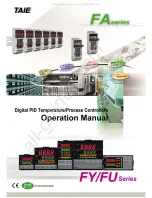
CHAPTER 5: SETTINGS
CONTROL ELEMENTS
L90 LINE CURRENT DIFFERENTIAL SYSTEM – INSTRUCTION MANUAL
5-371
5
The thermal overload protection element corresponds to the IEC 255-8 standard and is used to detect thermal overload
conditions in protected power system elements. Choosing an appropriate time constant element can be used to protect
different elements of the power system. The cold curve characteristic is applied when the estimated I
p
current is less than
10% of the base current. If I
p
current is greater or equal than 10% than the base current, then the hot curve characteristic
is applied. I
p
current is estimated with a fixed time constant for both cooling and heating that reaches to the final value in
two seconds on a step change (either step up or step down) signal.
The IEC255-8 cold curve is defined as follows:
Eq. 5-44
The IEC255-8 hot curve is defined as follows:
Eq. 5-45
where
t
op
= time to operate
τ
op
= thermal protection trip time constant
I = measured overload RMS current
I
p
= measured load RMS current before overload occurs
k = IEC 255-8 k-factor applied to I
B
, defining maximum permissible current above nominal current
I
B
= protected element base (nominal) current
To ensure element accuracy for high overcurrent conditions, the maximum value of I/(k x I
B
) is limited to 8, even when
realistically it is exceeding this value.
The reset time of the thermal overload protection element is also time delayed using following formula:
Eq. 5-46
where
τ
rst
= thermal protection trip time constant
T
min
= a minimum reset time setting
















































